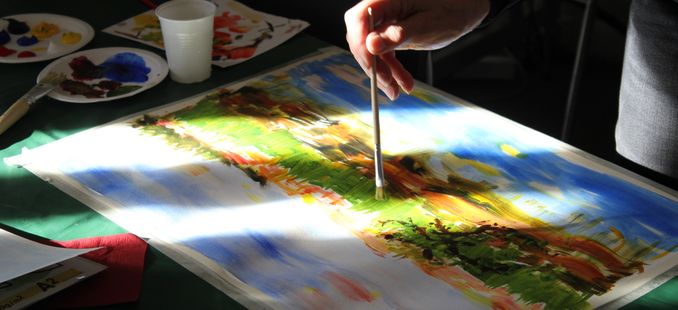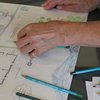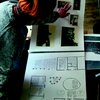
Creative activity helps the brain age vividly
Ageing is inevitable. Even though we live longer than before and are in better shape, we might get a memory disorder. The Active Ageing research group at Turku University of Applied Sciences produces information and models for functional ageing. Each and every one of us can grow old wisely and creatively.
Text and photos: Sanna Lindén and Reia Sola, students in Journalism
The main purpose of the research group in Active Ageing is to promote a positive attitude towards ageing and to respond to the challenges brought by it. The currently ongoing projects handle ageing in versatile ways.
“For example life-long learning, active actorship, memory health, comprehensive well-being and cultural well-being are central themes in our projects”, says Leader of the research group, D.Sc. (Ed.) Helena Malmivirta.
The research group members are a competent group of teachers and students in the field of health care and well-being. Principal Lecturer Kari Salonen, who has been involved in the group since its beginning, praises his colleagues as well as the student cooperation.
“Students are very good partners and their input is irreplaceable”, Salonen says.
International cooperation created a picture game for the elderly
One of the most interesting cooperation projects is Gamified Solutions in Healthcare. The project has developed an application in Google maps, in which users can build a story of their own photos. Single stories are fascinatingly intertwined with the stories of others.
“Research has shown that a photo has a multilevel impact on an aged person maintaining their activity”, says Malmivirta of the core idea behind the project.
“The ageing possess a lot of knowledge, and through the application their stories will be heard”, she adds. The different layers of memory are activated when looking at the photos. By immersing oneself in the stories and looking and telling the user creates new bridges to the past. Thus the identity becomes more harmonious with the means of art pedagogy.
Gamified is a good example of multidimensional, international cooperation, which is important to the research groups at Turku University of Applied Sciences. The cooperation started at the UAS’ CARPE network conference in Manchester, and at the moment, the app is being worked on in Japan.
More and more often, memory disorders start already in working age
It is important for brain health that a human being acts in interaction as a part of a group. Ageing creates lots of challenges for this.
“Loneliness must be the worst challenge and it will continue to increase. It is a big risk and a huge social problem”, Salonen ponders.
In addition to loneliness, Salonen is worried about how the elderly living at home can access services, especially in the countryside. Furthermore, the elderly do not form such a homogeneous group as before: intoxicants and financial problems are real also in the older age groups.
Memory disorders affect more and more Finns in working age. Every year, 13 000 people are diagnosed and today their number is already 130 000. The treatment costs caused by memory disorders make the issue one of the entire society.
“Even though treatment and medicines are developing, the number of those with a memory disorder will increase”, Salonen says.
Third age is the best age?
Those that retire today have about 20 good and active years of life ahead of them. This time is called the third age, and it lasts until old age. It is the longest period of all in a human being’s life.
“In their third age, people are said to be interested, to keep up with the times and influence their own issues”, Salonen says.
In the retirement age, productive ageing means giving an input based on life experience to society. This can be implemented, for example, in dialogue between the ageing and youths. According to Salonen, the dialogue has been extensively studied in Finland, and different grandma and grandpa projects have been implemented.
“The young teach the old and vice versa. The aged are now interested in what youths have to teach, which is probably related to computers. Interaction is important as the aged have information which should be mediated to the young”, Salonen points out.




